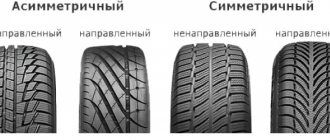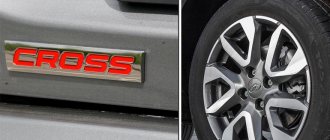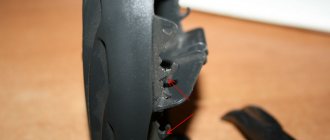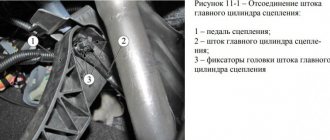Original tires
As you know, any wheel includes a tire and a rim. Moreover, they can be of different sizes. sets the following standard size for the wheels of his new car (we mean the simplest configuration): 185/65, and this is with a radius of 15. The indices of other indicators are equal to 88H or 88T.
All these tricky numbers reflect the following parameters:
- Width, mm: 185.
- Profile: 65 percent of the width ((185/100)*65).
- Discs, radius: 15'.
- 88: maximum weight 560 kilograms.
- H: speed index (less than or equal to 210 km/h). In the case of T instead of H: less than or equal to 190 km/h.
The manufacturer of such wheels is the Belshina enterprise, and the wheels themselves are called ArtMotion. The product is characterized by sufficiently soft rubber, which has good endurance along with excellent road grip and low noise levels. The option for the cold season is called ArtMiton Snow.
On the most inexpensive Vesta trim levels, the tires are mounted on stamped steel. The dimensions of these disks are: 6J15ET504x10060.1. As an option, light alloys with the same parameters can be installed. Such discs are produced by K&K, and the disc model is called ANNA-15.
The above dimension is deciphered as follows:
- 6J: rim width (here 6').
- 15: installation diameter (here 15').
- ET50: offset (here 50 mm).
- 4x100 (diameter of the circle of the centers of the mounting holes or PCD). Installation is carried out using 4 bolts located on a circle measuring 100 mm. Sometimes this parameter is called bolt pattern.
- 1: disc hub mounting diameter (DIA).
The manufacturer equips the richest configurations of the Lada Vesta with the following standard sizes: 195/55R1691H or 195/55R1691T .
Let's decipher these numbers:
- Width, mm: 195.
- Profile height: 107.25 mm, which is 55% of 195.
- R16: rim width in (here 16').
- 91: load capacity indicator (for number 91 this is 615 kg).
- H: speed indicator (less than or equal to 210 km/h, in the case of T: less than or equal to 190 km/h).
Such tires for the auto giant are produced by the German company Continental. The model is called EcoContact. However, alloy wheels are no longer manufactured by Continental, but by K&K (the wheel model is called Ptalomey 16). The discs have dimensions 6Jx16ET504x10060.1. In fact, they differ only in the fit size, which is 16 inches.
However, similar wheels and the same rims can be installed on the most inexpensive Lada Vesta configurations - however, as an optional feature.
A car in the Luxe version, for some money, can also be equipped with wheels (with 17 discs) of a similar model from the same manufacturer: Ptalomey 17. Below in the table you can see the wheel sizes for Lada Vesta:
Summarizing
In general, the wheels that are standard installed on the Lada Vesta have enviable characteristics, unlike previous models. High running properties, reliable operation, and high-quality materials satisfy consumers, as evidenced by positive assessments from specialists.
For winter we recommend narrower tires!
Closer to the cold period of the year, the question of choosing winter tires begins to worry. Specimens that are a little narrower are worthy of attention, because wide ones are quite unpredictable in snowy ruts.
In addition, the low-profile design allows you to feel all the delights of uneven surfaces, and high tires add comfort. You can start preparing for winter in the summer to choose a suitable replacement.
Additional sizes
Many car enthusiasts install wheels and tires of a different size on their car, for various reasons: it could be repairs after an accident or just a modification. Let's try to understand in more detail the adequate mounting options for non-standard tires and wheels on the Lada Vesta. We will also consider the advantages and disadvantages of this operation, as well as the consequences of possible installations that promise serious losses in the operating parameters of individual components and assemblies (including early breakdowns).
If the car owner simply decided to change the tires on his car (without changing the dimensions), there is nothing wrong with that. But in this case, it is necessary to ensure that all tires contain the same tread, as well as an equal degree of wear (in this case, the tread is allowed to differ only for the front and rear axles).
Wheels from other Ladas will not fit
Cars with standard size 185/55 radius 15 (remember that these are products from Grant and Priora) are not the same size as Vesta, although offhand they look the same. The fact is that the landing hub diameter of the above car models is 1.6 mm smaller (it is 58.5 mm).
If you try to correct this hole to the required size using a turning groove, in any case, the PCD indicator for such disks will not be 4x100, but 4x98, as a result you will get three fastening bolts that do not coincide with the fastening holes at all. As a result, the alignment of the disk and the hub will be disrupted, and the movement of the vehicle will be accompanied by beating.
Oversized wheels
Such discs don’t just change the appearance of the car; dynamic performance, handling, and driving stabilization also depend on them. Often, all this data changes for the worse when replacing larger disks.
If you are interested in such a setup, always remember that enlarging the rim will certainly mean choosing other tires (necessarily with a smaller profile). The fact is that the outer diameter of the tire in any case cannot be larger than that recommended by the manufacturer (don’t forget about the wheel arches), otherwise the tires will scratch along the arches when driving (especially when cornering), and this, as you know, is not at all good.
During 12-month tests, the following standard sizes were successfully installed on the Lada Vesta car:
- Radius 15 – 175/70 and 205/60.
- Radius 16 – 185/60.
- Radius 17 – 175/55 and 195/50.
Note that 17' diameter wheels were installed on test modifications of Vesta. In principle, 18-inch wheels can be mounted on a car, but the outer diameter of this tire is almost 670 mm and the width is 235 mm. These parameters are very different from those recommended by the factory, and, despite the formal possibility of installation, real domestic roads will not allow such tires to drive normally (low-profile tires) - road irregularities will quickly ruin the wheels - note, at their price, several times higher than the original ones.
Advantages of mounting large drives:
- Visual effect, the car seems to become more fashionable.
- Increased dynamic properties, road stability, and steering system feedback.
- Less response from road potholes.
- Thrifty attitude towards suspension life (with a profile of at least 55%).
- Reducing the distance when braking.
- Improved functioning of ESP, ABS systems.
- Reducing braking length;
Disadvantages of mounting large drives:
- Lack of convenience when moving (large transfer of road damage to the interior and steering wheel).
- Undesirable driving on bad roads.
- Increased control over tire pressure.
- Increased fuel consumption due to the need for increased energy consumption when starting off.
- High price.
Oversized wheels
Wheels of abnormal size not only change the appearance of the car, but also have a significant impact on both the dynamics and stability of cars on the highways. And, perhaps, the only improvement in the use of large-sized wheels is an increase in cross-country ability by increasing the ground clearance of the same West SV.
It is possible (and the factory does not prohibit this) to equip the Lada Vesta with 18-inch wheels.
But negative consequences in the form of increased wear, as well as the possibility of early failure due to the national characteristics of Russian municipal roads, may forever discourage such tuning experiments. Moreover, if you consider that large-sized slopes are much more expensive than standard tires.
Pressure
Many beginners do not take into account the pressure in the wheels at all, but, meanwhile, it is extremely important - and this applies not only to low-profile tires, but to any tires in general. The value of this indicator must be written by the manufacturer in the manual for working with the machine, as well as on the body in an accessible place. In particular, for Lada Vesta there is such a mark at the central pillar on the driver's side.
Thanks for subscribing!
But still, low-profile tires require more control, because insufficient pressure increases the effect of imperfections in the road surface on the wheel as a whole. In practice, in low-profile tires this figure is usually increased by 15% when compared with the value recommended by the manufacturer.
Wheels for Vesta
In addition to the basic parameters of the wheels, from which you can draw a conclusion about the correctness or incorrectness of use, there are other characteristics, as well as features that cannot be ignored if you want to avoid problems in the future.
ET
The characteristic designated ET (disc offset) is the parameter that the manufacturer indicates in any case, and which should be kept in mind when selecting discs for the machine.
If you choose wheels of sufficient width, and at the same time having a reduced offset value, then the stability of the car increases, but the hub bearings begin to experience heavy loads, as a result they can collapse - and the result, alas, can be an accident.
Therefore, it is highly not recommended to reduce ET by more than 5-7 mm.
PCD
In this case, the value of this characteristic when selecting disks should be observed without any deviations. After all, if the value of this parameter for new disks differs from what is contained in the manual, the disks simply cannot be installed.
D
A number of brands make the hub hole diameter (D) larger - specifically so that the discs can be used on different cars. The only thing that will also need to be purchased in case of difference D is centering inserts. This is the name given to special rings for adapting discs to different car models. In other words, if you purchased discs with an inflated D, it’s not a big deal. If it’s the other way around, alas, you wasted your money.
Despite the fact that wheel manufacturers often take care of their consumers, a number of drivers are frankly lazy to install centering inserts - and, logically, when the car is moving over 100 km/h, the wheels give off a wobble in the interior and steering wheel, and if you don’t immediately guess why matter, any diagnostics will not show anything - as a rule, they sin on balancing, which has absolutely nothing to do with it.
Rim width
If the rims already contain rubber, then using wider or narrower rims than the standard ones can change the parameters of the plane of contact of the wheel with the road surface, which will cause the car's dynamics to suffer. Moreover, when driving on unpaved roads or on snow, tires with a wider rim will slip due to the low overall pressure on the surface - therefore, the width of the rim must also be taken into account.
Choosing tires for different operating conditions
Winter becomes a real headache for car enthusiasts; some prefer not to use their cars during this period, while others have to buy winter tires. You cannot drive on summer tires in the cold season - their composition is not designed for low temperatures. Braking, starting to move, and driving become impossible.
Choosing winter tires
Large tires can be installed on Vesta, but for winter it is better to install smaller wheels. If R16 is used in summer, then R15 is recommended for winter. The tire width is also selected smaller. In winter, speed characteristics are not so important. Studded tires and so-called “Velcro” tires are available on the market. It is ideal for residents of large cities who rarely go off-road. Spikes are not needed on asphalt roads. For those who often travel on snowy, icy roads, they are definitely necessary.
Tread pattern selection
There are three types of drawing:
Tire tread pattern
- Symmetric. Both sides of the pattern are the same and have a wave or bridge shape. Equally effective on snow and ice. Loses its properties on snow porridge in the spring or after treatment with reagents.
- Directed. It is not afraid of snow, ice, and also does not lose its properties in slush. Not suitable for use on dry asphalt due to increased noise. The peculiarity of these tires is in the direction - they must be mounted strictly according to the direction of travel arrow, which is indicated on the outer side of the product with the inscription “Rotation”.
- Asymmetrical. In addition to all the advantages of the described figures, noise reduction and high speed characteristics are added. It is installed according to marks indicating the inside and outside with inscriptions on the sides - “Inside”/“Outside”. The only drawback is the high price.
To save money, you can use the directional option. If your budget allows, it is better to choose an asymmetrical pattern.











